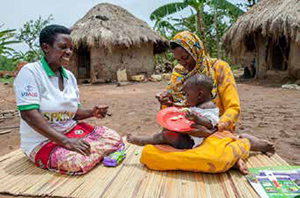Community Media for Nutrition Social and Behavior Change: Learning from the SPRING Project
Since 2012, SPRING has explored and evaluated the role and effectiveness of storytelling in nutrition social and behavior change communication (SBCC), with a focus on community media, defined as technology-enabled media developed in the community, about the community, and with the community.

